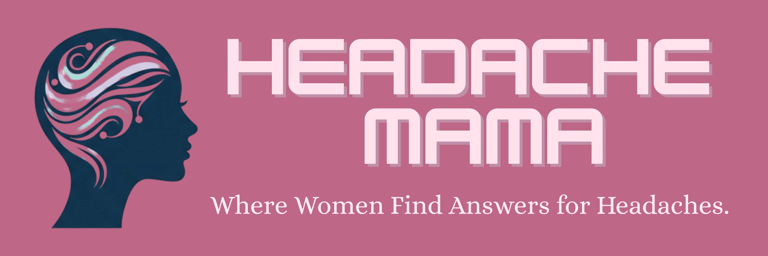CBT for Migraine & Relaxation: How I Reduce My Migraine Days
Discover how using CBT for migraine and simple relaxation techniques can provide real relief. This is my personal guide to managing migraine fear and reducing migraine days.
7/21/20254 min read


If you’re a Migraine Mama like me, you know the feeling. The whisper of a prodrome symptom that sends a jolt of anxiety through your body. The quick mental calculation of how many days this attack will steal. The fear. For years, that fear was almost as debilitating as the pain itself.
I felt like migraine was happening to me, and I was just a passenger on a painful, unpredictable ride. But what if we could grab the steering wheel, even just a little?
That’s what happened when I discovered the powerful combination of Cognitive Behavioral Therapy (CBT) and dedicated relaxation practices. It didn't magically cure me, but it gave me a toolkit. It taught me how to manage my mind and my body, and in doing so, I’ve been able to significantly cut down my number of migraine days.
Today, I want to share exactly how I did it.
What is CBT, Really? (Hint: It’s Not Just ‘Thinking Positive’)
When I first heard about CBT, I was skeptical. I thought, "You can't think your way out of a neurological disease." And you can't.
But CBT isn't about toxic positivity. It’s about recognizing and reshaping the unhelpful thought patterns that can actually make the migraine experience worse.
It’s based on a simple idea:
Your Thoughts → Create Your Feelings → Influence Your Behaviors & Physical Sensations
For someone with migraine, this cycle can be vicious. I call it the Migraine Fear Spiral.
The Thought: “Oh no, is that an aura? My whole weekend is ruined. I’ll be a terrible mum.”
The Feeling: A surge of panic, anxiety, and dread.
The Physical Sensation: My shoulders tense up, my heart races, my stress hormones spike... all things that are known migraine triggers or exacerbators.
CBT gives you the tools to interrupt that spiral.
My Go-To CBT Techniques for Taming the Migraine Mind
This is the practical stuff I use almost every day.
1. Catching the ANTs (Automatic Negative Thoughts)
An "ANT" is a term for those instant, negative thoughts that pop into your head. The first step is just to notice them without judgment. When I feel a migraine symptom, I grab a journal or the notes app on my phone and write down the thought, exactly as it is.
“This will be a level 10 pain day.”
“I’m letting my family down again.”
“I’ll never be able to hold down this job.”
Just seeing them on paper helps me realize they are thoughts, not necessarily facts.
2. Reframing the Narrative
Once you’ve caught the ANT, you can challenge it and offer a more balanced, compassionate alternative. It’s not about lying to yourself; it’s about finding a more helpful truth.
Instead of: “My whole weekend is ruined.”
I reframe to: “I feel an attack starting. I will take my medication, use my tools, and rest. I am prepared for this. The weekend might be different than planned, but it’s not ruined.”
Instead of: “I’m so weak for having to cancel.”
I reframe to: “Resting is a strong and necessary choice for my health. Taking care of myself allows me to be present for my family later.”
The Power of a Calm Nervous System: My Relaxation Hacks
If CBT is for the mind, these relaxation techniques are for the body. Migraine often puts our nervous system into a "fight or flight" state. Relaxation activates the "rest and digest" response, which is profoundly healing.
1. Diaphragmatic (Belly) Breathing
This is the fastest way I know to calm a rising tide of panic. It’s so simple.
Sit or lie down comfortably.
Place one hand on your chest and the other on your belly.
Breathe in slowly through your nose for a count of four. Your goal is to make the hand on your belly rise while the hand on your chest stays relatively still.
Hold for a count of two.
Exhale slowly through your mouth for a count of six. Feel your belly fall.
Repeat for 2-5 minutes.
2. Progressive Muscle Relaxation (PMR)
When we’re in pain or anxious, our muscles clench—especially in the neck, jaw, and shoulders. PMR involves systematically tensing and then releasing muscle groups to force them to relax.
I’ll lie down and work my way up my body: Tense my feet for 5 seconds, then release completely for 20 seconds. Then my calves, my thighs, my glutes, and so on, all the way up to my jaw and forehead. It makes me incredibly aware of where I’m holding tension.
Putting It All Together for Fewer Migraine Days
Here’s how this works in real life:
On a good day: I practice 5 minutes of belly breathing in the morning to start my day from a place of calm, not stress.
At the first sign of prodrome: I immediately do a PMR session to release physical tension. I catch any ANTs about the impending attack and reframe them. This proactive approach can sometimes stop the attack from escalating.
During an attack: Between waves of pain, I use belly breathing to manage the physical sensations and CBT to cope with the emotional distress of being in pain. It helps me endure it with less suffering.
By using CBT to manage my fear and relaxation to calm my body, I've reduced the overall stress load on my system. Less stress equals fewer triggers activated. And that has been the ultimate key to cutting my migraine days and getting back to my life.
It's a practice, not a perfect science. Some days are still hard. But now, I have my tools. I’m no longer just a passenger. I’m a mama with a map, navigating my way to more good days.
References
American Psychological Association. (2017, July). What is cognitive behavioral therapy?. APA.org. Retrieved July 21, 2025, from https://www.apa.org/ptsd-guideline/patients-and-families/cognitive-behavioral
Buse, D. C., & Andrasik, F. (2009). Behavioral management of headache. Rheumatic Disease Clinics of North America, 35(2), 259–278. https://doi.org/10.1016/j.rdc.2009.05.006
National Center for Complementary and Integrative Health. (2024, April). Relaxation techniques for health. NCCIH. Retrieved July 21, 2025, from https://www.nccih.nih.gov/health/relaxation-techniques-for-health
Rizzoli, P., & Loder, E. W. (2011). Behavioral management of headache. Headache: The Journal of Head and Face Pain, 51(5), 765–783. https://doi.org/10.1111/j.1526-4610.2011.01893.x
Seng, E. K., & Holroyd, K. A. (2010). The effects of cognitive-behavioral therapy for recurrent headache on disability, productivity, and health care use. Annals of Behavioral Medicine, 39(1), 59-69. https://doi.org/10.1007/s12160-010-9154-y
Disclaimer
Content on HeadacheMama.com is for informational purposes only and is not a substitute for professional medical advice. Always consult your doctor.
contact@headachemama.com
© 2025. All rights reserved.
